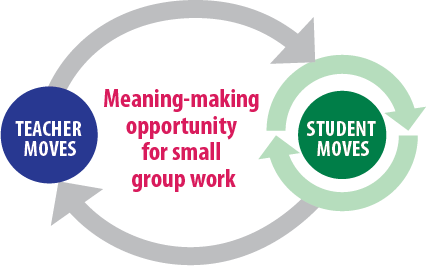

With ELs the fastest-growing subgroup in K-12 classrooms, we need to include ELs in the meaning-making discussions critical to STEM learning. ELs can and do engage productively and effectively in meaning-making activities while they are learning English. A lot of important meanings can be made with imperfect English! A ‘language as action’ approach, represented by the spiral on the home page, focuses on helping ELs learn English while and through doing math or science alongside their classmates—not beforehand or as separate from math or science. In the ‘language as action’ approach, students need to make meaning together becomes an engine that drives language development.
“Only an emphasis on language as action … engages students in the meaningful learning of new disciplinary practices while simultaneously strengthening their language uses in those practices.”
(Heritage, Walqui, & Linquanti, 2015, p. 32)
“Our ELs are getting more comfortable with speaking up even if they’re uncertain of their wording, and other students have been willing to help them figure out how to word their ideas. And, by questioning one another, asking for clarification, and being patient when ELs need more time to explain ideas, students are helping one another learn language.”
fourth grade teacher

The approach that led to the positive changes this teacher spoke about has three components. The dropdown menu for this page highlights each component separately. These can be learned and practiced in a variety of combinations, but they work together and some of each component must be put into play to see the full benefits of the approach.
Focusing on student reasoning and collaborative discourse sometimes requires a change in classroom norms for participation and interaction for both teachers and students. As one teacher in the NSF project remarked, “New teacher or old teacher, it doesn't matter. We’re all on a new playing field today!”